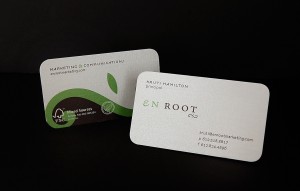We’re hearing a lot about Pinterest for business these days, and for us as visual marketers, we think it’s a fantastic tool for many businesses. But sometimes it’s trial and error. What will your customers respond to? Will you spend a lot of energy developing a profile, only to find it fall flat? Come to think of it, that’s the fact with any type of marketing.
That’s been the case for book contributor Get Satisfaction. The company helps customers attract and engage their own clients, so it’s only fitting that Get Satisfaction practices what it preaches. Caty Kobe (@catykobe) Community Support Manager for Get Satisfaction, says that the company’s use of Pinterest has been an experiment:
“One of the great things about Get Satisfaction is that we have a strong culture of experimentation…Right now, our Pinterest presence is purely experimental. It all started because I wanted a board on my personal account to show off how great it is to work for Get Satisfaction. My coworker thought it was cool idea, and then asked if he could pin screenshots of custom GetSat implementations to the board as he was looking for a way to easily share the information with other colleagues & customers.”
Since Kobe and her coworker have started their Pinterest boards, other coworkers have joined in the fun, creating a company-wide fever. Sometimes experiments bring the most fun results.
Being Where Your Customers Are
Whether it’s Facebook, Pinterest, Twitter, LinkedIn or Quora, being where your customers are is key to a small business’ success. Social media may sometimes be trendy, but that’s all the more reason to hop on early to participate.
“We can’t predict where we will connect with customers but we do know that we have to be where they are so that means we will continue to try new things as well as optimize where we already are,” says Kobe.
Managing Customer Communities
Kobe manages communities of customers every day for her job, and she’s got lots of tips for the rest of us. The first is to follow the Company-Customer Pact (and as you can see from the list of supporters, some very recognizable names agree with her). Her other tips (below) are essentially what we all look for when we’re on the customer side. A good company delivers on all points, be it through its Pinterest page or customer support line.
- You need to be human when connecting with your customers online. Be respectful and conversational, show some personality and avoid all the cliche phrases that make you mad when you’re a customer.
- You need to be personal when communicating… use your customer’s real names, comment on their avatar and be proactive about sending them content they’ll find interesting.
- You need to be ready for anything. Anticipate the problems that might occur and solve them before they do. Set clear expectations so your customers feel like you care, and not like they’re getting the run around.
- You need to be accountable for your customers. Customers spend a lot of money with each of our companies each year… the least we can do is make it easy for them to contact us when they have a question or problem. There are some conversations that need to be held privately, but definitely cultivate public conversations to demonstrate your accountability on a daily basis.
- You need to be earnest in demonstrating your good intentions with plain, candid conversation.


